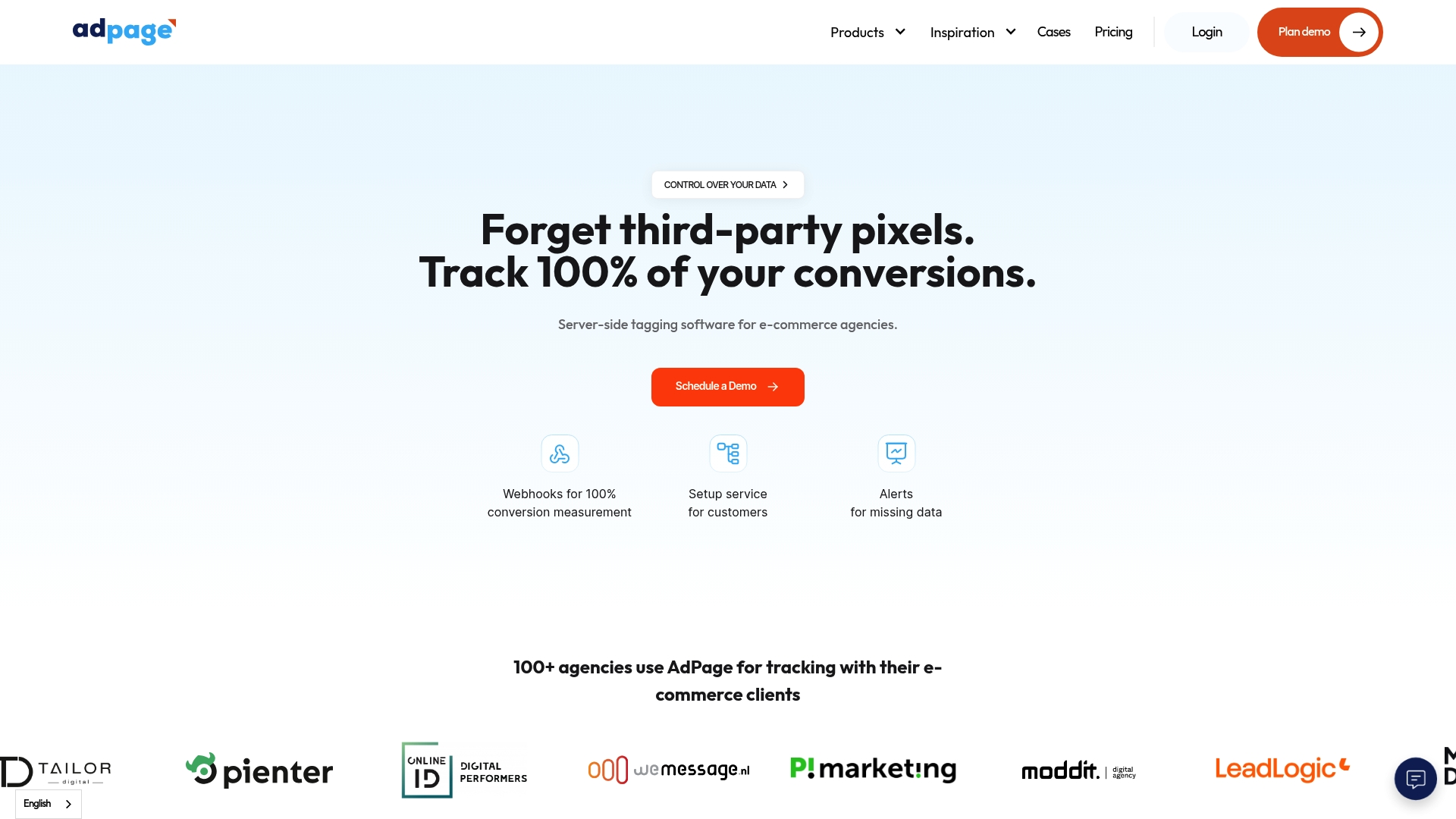More than 80 percent of marketers say automation has changed how they reach customers. With digital interactions multiplying and personalisation now expected, businesses need smarter solutions just to keep up. Understanding marketing automation is no longer optional for brands aiming to grow. This guide breaks down what marketing automation means in plain terms, clarifies its core concepts, and reveals the real advantages businesses can achieve with the right strategy.
Table of Contents
- Defining Marketing Automation And Core Concepts
- Major Types Of Marketing Automation Systems
- How Marketing Automation Platforms Work
- Key Benefits For E-Commerce Businesses
- Common Pitfalls And What To Avoid
Key Takeaways
| Point | Details |
|---|---|
| Marketing Automation Enhances Efficiency | Automation streamlines marketing tasks, reduces manual interventions, and improves operational effectiveness across multiple channels. |
| Personalization is Key | Effective marketing automation nurtures leads through personalized interactions, driving higher customer engagement and conversion rates. |
| Integration and Implementation are Critical | Successful marketing automation requires proper integration with existing systems and thorough training for teams to avoid common pitfalls. |
| Balancing Automation with Human Insight | Striking the right balance between automation and personal touch ensures that marketing efforts remain authentic and resonant with customers. |
Defining Marketing Automation and Core Concepts
Marketing automation represents a strategic technological approach that enables businesses to streamline, automate, and measure marketing tasks and workflows. According to research from International Educational Research Journal, this approach fundamentally transforms how organisations manage their marketing processes by reducing manual intervention and increasing operational efficiency.
Marketing automation goes beyond simple task repetition - it’s a sophisticated system designed to nurture potential customers through personalised, targeted interactions across multiple digital channels. The core objective is transforming disconnected marketing activities into a cohesive, data-driven strategy. As explored in research from Springer, machine learning applications are increasingly enhancing these automation capabilities, enabling more intelligent and responsive marketing practices.
Key components of marketing automation typically include:
- Email Marketing Workflows: Automatically triggered messages based on specific user behaviors
- Lead Scoring and Nurturing: Systematically ranking and developing potential customer relationships
- Customer Segmentation: Dividing audiences into precise groups for targeted communication
- Performance Analytics: Tracking and measuring campaign effectiveness in real-time
By integrating these sophisticated technological tools, businesses can create more personalised customer experiences while simultaneously reducing operational complexity and improving overall marketing return on investment. The goal is not just automation, but intelligent, responsive engagement that adapts to individual customer journeys.

Major Types of Marketing Automation Systems
Marketing automation systems have evolved into sophisticated technological solutions designed to address diverse business needs. According to research from Wikipedia, there are several primary categories of marketing automation systems that serve unique organisational objectives.
The primary types of marketing automation systems include:
- Integrated Marketing Management (IMM): Comprehensive platforms that coordinate marketing activities across multiple channels
- Marketing Resource Management (MRM): Systems focused on optimising marketing budgets, resources, and operational workflows
- Enterprise Feedback Management (EFM): Tools designed to collect, analyse, and act on customer feedback and insights
- Voice-Based Marketing Automation: As highlighted by Wikipedia, these systems automate phone-based marketing interactions, leveraging advanced communication technologies
Each type of marketing automation system offers distinct capabilities. Automation in Marketing Tools can help businesses select the most appropriate system based on their specific marketing strategy and operational requirements.
Here’s a comparison of the major types of marketing automation systems and their core features:
| System Type | Main Function | Typical Use Case |
|---|---|---|
| Integrated Marketing Management | Coordinates activities across channels | Multi-channel campaign orchestration |
| Marketing Resource Management | Optimises budgets and operational workflows | Resource planning and budget allocation |
| Enterprise Feedback Management | Collects and analyses customer feedback | Survey distribution and analysis |
| Voice-Based Marketing Automation | Automates phone-based marketing interactions | Automated outbound/inbound calls |
| Hybrid/Combined Solutions | Integrates features from multiple systems | Customised, modular technology stacks |
Moreover, modern marketing automation systems are not mutually exclusive. Many organisations implement hybrid solutions that combine features from multiple system types, creating a more flexible and comprehensive marketing technology stack. The key is selecting systems that align with specific business goals, customer engagement strategies, and technological infrastructure.
![]()
How Marketing Automation Platforms Work
Marketing automation platforms function through sophisticated, interconnected processes that transform raw data into strategic marketing actions. According to research from Journal of Knutd, these systems integrate complex project management methodologies to streamline marketing workflows and enhance operational efficiency.
The core operational mechanism of marketing automation platforms typically involves several critical stages:
- Data Collection: Gathering user interactions across multiple digital touchpoints
- Segmentation: Categorising users based on behaviors, preferences, and engagement patterns
- Trigger Identification: Recognising specific user actions that warrant automated responses
- Workflow Execution: Deploying personalised marketing communications automatically
Additionally, emerging technologies are revolutionising these platforms. The Neural Optimization with Adaptive Heuristics (NOAH) framework demonstrates how artificial intelligence can optimize complex marketing processes like content generation and bidding strategies. E-commerce automation insights highlight how these advanced platforms can significantly improve revenue tracking and customer engagement.
Ultimately, modern marketing automation platforms are not just about sending messages - they’re intelligent ecosystems that adapt, learn, and respond to changing customer behaviors in real-time. By combining data analysis, machine learning, and strategic communication, these platforms enable businesses to create more meaningful, personalized customer experiences at scale.
Key Benefits for E-Commerce Businesses
Marketing automation offers e-commerce businesses transformative advantages that extend far beyond traditional marketing approaches. According to research from International Journal of Service Research, automation through digital channels like email, advertising, and social media significantly improves operational efficiency and marketing scalability.
The key benefits for e-commerce businesses include:
- Enhanced Customer Segmentation: Precision targeting based on detailed behavioral analytics
- Increased Conversion Rates: Personalised communication strategies that drive purchasing decisions
- Operational Efficiency: Reduced manual marketing tasks and streamlined workflow management
- Real-Time Performance Tracking: Instant insights into marketing campaign effectiveness
Research from arXiv demonstrates how multi-task learning in marketing automation can dramatically enhance customer engagement. By leveraging sophisticated data analytics techniques, e-commerce businesses can create more intelligent, responsive marketing strategies that adapt to individual customer preferences.
Ultimately, marketing automation represents more than a technological tool - it’s a strategic approach that enables e-commerce businesses to build deeper, more meaningful customer relationships. By transforming raw data into personalised experiences, businesses can not only improve their marketing efficiency but also create more authentic, targeted interactions that drive long-term customer loyalty and revenue growth.
Common Pitfalls and What to Avoid
Marketing automation, while powerful, presents several critical challenges that businesses must carefully navigate. Research from the International Educational Research Journal highlights the significant obstacles organisations encounter during marketing automation adoption, emphasizing the delicate balance between technological implementation and human interaction.
The most prevalent pitfalls in marketing automation include:
- Over-Automation: Losing personal touch by relying too heavily on algorithmic interactions
- Poor Data Quality: Implementing strategies based on incomplete or inaccurate customer information
- Inadequate Integration: Failing to connect automation platforms with existing technological ecosystems
- Insufficient Training: Not providing teams with comprehensive understanding of automation tools
According to research from arXiv on process automation, successful implementation requires meticulous change management and strategic process selection. Businesses can mitigate risks by understanding common tracking mistakes and maintaining a flexible, adaptive approach.
Ultimately, marketing automation should enhance, not replace, human creativity and strategic thinking. The most successful implementations recognise that technology is a tool for augmentation, not a complete substitute for nuanced marketing expertise. By maintaining a balanced approach that combines technological capabilities with human insights, businesses can unlock the true potential of marketing automation while avoiding its potential pitfalls.
Elevate Your Marketing Automation with Precision Tracking
Understanding marketing automation is crucial but achieving its full potential requires flawless data collection and conversion tracking. The article highlights key challenges like poor data quality and insufficient integration that often hold businesses back from creating personalised, effective campaigns. With terms like “customer segmentation,” “workflow execution,” and “real-time performance tracking” taking centre stage, it becomes clear that without reliable analytics, marketing automation systems cannot truly deliver responsive, intelligent engagement.

Discover how AdPage, a cutting-edge platform tailored for e-commerce businesses, can eliminate those data hurdles by providing server-side tagging and consent management solutions. This means you can track 100% of your conversions accurately, reduce data loss from traditional analytics, and optimise your marketing operations with confidence. Whether you use Shopify, WooCommerce, or Magento, our seamless integrations ensure your automation workflows run smoothly and precisely. Take charge of your marketing success today with AdPage and turn every customer interaction into measurable growth.
Frequently Asked Questions
What is marketing automation?
Marketing automation is a strategic approach that enables businesses to streamline, automate, and measure their marketing tasks and workflows, enhancing operational efficiency and creating personalized customer experiences.
What are the key components of marketing automation?
The key components of marketing automation include email marketing workflows, lead scoring and nurturing, customer segmentation, and performance analytics.
What are the major types of marketing automation systems?
The major types of marketing automation systems include Integrated Marketing Management (IMM), Marketing Resource Management (MRM), Enterprise Feedback Management (EFM), and Voice-Based Marketing Automation.
How do marketing automation platforms work?
Marketing automation platforms work by collecting user data, segmenting users based on interactions and preferences, identifying triggers for automated responses, and executing personalized marketing workflows effectively.



.png)
